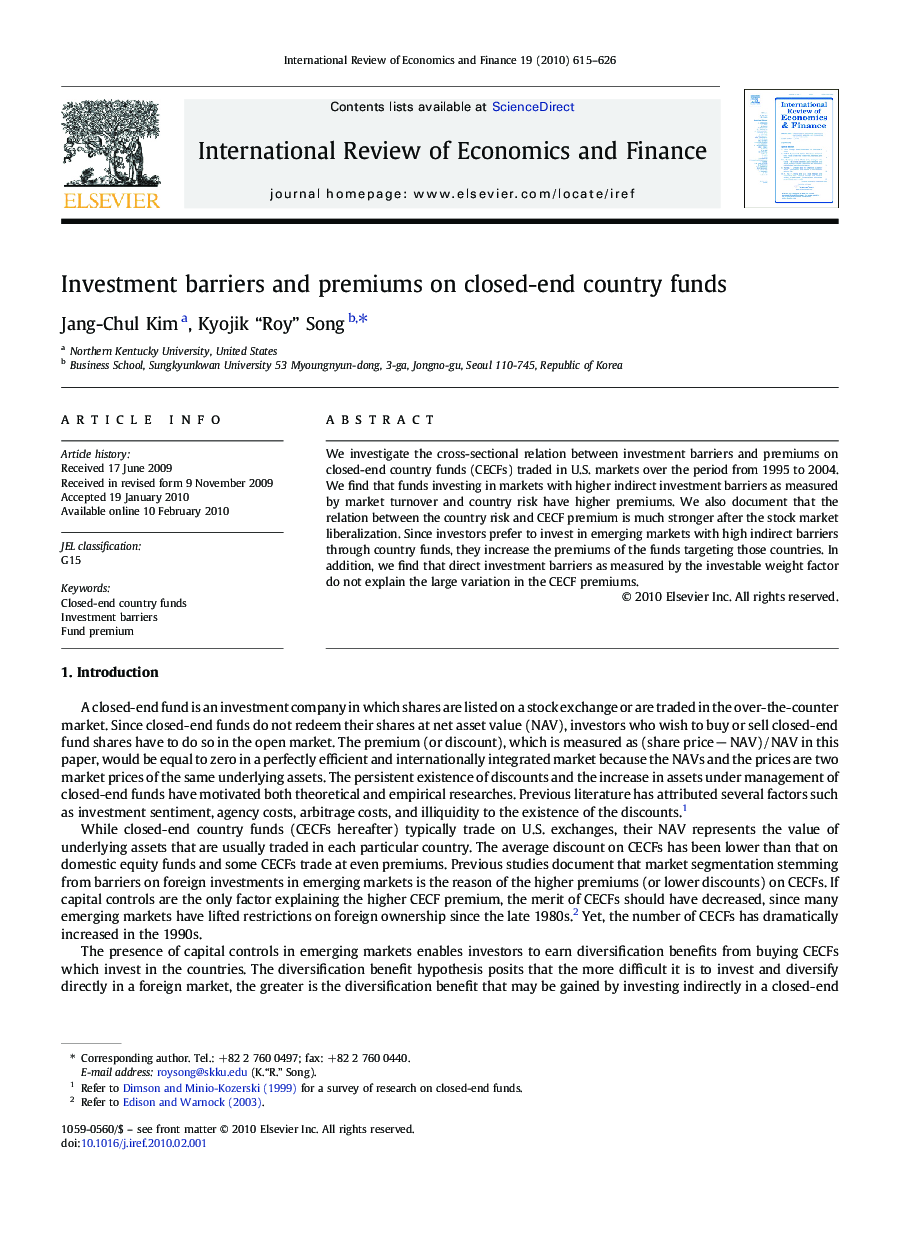| Article ID | Journal | Published Year | Pages | File Type |
|---|---|---|---|---|
| 5084022 | International Review of Economics & Finance | 2010 | 12 Pages |
Abstract
We investigate the cross-sectional relation between investment barriers and premiums on closed-end country funds (CECFs) traded in U.S. markets over the period from 1995 to 2004. We find that funds investing in markets with higher indirect investment barriers as measured by market turnover and country risk have higher premiums. We also document that the relation between the country risk and CECF premium is much stronger after the stock market liberalization. Since investors prefer to invest in emerging markets with high indirect barriers through country funds, they increase the premiums of the funds targeting those countries. In addition, we find that direct investment barriers as measured by the investable weight factor do not explain the large variation in the CECF premiums.
Related Topics
Social Sciences and Humanities
Economics, Econometrics and Finance
Economics and Econometrics
Authors
Jang-Chul Kim, Kyojik “Roy” Song,
